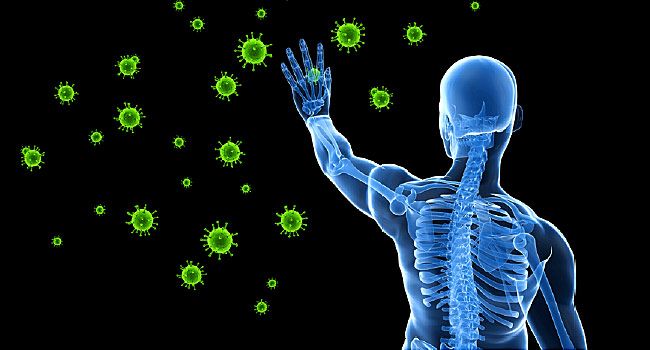Immunity
It is the capability of multicellular organisms to resist harmful disease causing microorganisms. Our immune system gives us that ability.
It is of two types :
Innate immunity ( inborn immunity )
It protects us by providing different types of barriers to the entry of foreign agents or any pathogen into our body.
Four types of barriers :
Physical barriers : Skin is the main physical barrier which prevents entry of other micro-organisms into the body. Mucus coating of epithelium lining the respiratory, gastrointenstinal ( digestive tract, alimentary canal ) and urinogenital tracts also help in trapping microbes entering our body.
Physiological barriers : It includes acid in stomach, saliva in mouth, tears from eyes. Tears and saliva contains lysozyme ( an enzyme which destroys cell walls of certain bacteria ) which can destroy bacterial pathogens.
Cellular barriers : It includes WBC monocytes and natural killer cells. Natural killer cells control several types of tumors and microbial infections by limiting their spread and subsequent tissue damage.
Cytokine barriers : Virus-infected cells secretes proteins call interferons which protect non-infected cells from further viral infection. It inhibits the synthesis of proteins required for replication of virus. It controls viral diseases but do not kill the virus.
Acquired Immunity ( Adaptive immunity )
This is gained after birth and is pathogen specific ( different for different type of pathogens ). When a new pathogen enters our body, it initiate a primary response by which B and T cells ( Bone-marrow & Thymus cells ) start dividing to produce effector B and T cells for controlling disease and also memory B and T cells which are stored in the spleen and lymph nodes throughout the life. When that pathogen again enters our body the memory B and T cells start dividing and produce effector B and T cells. This is called secondary response which is effective / intensive than primary response.
Two types of acquired immunity
Humeral Immunity : Also called antibody mediated immunity. It shows a quick response against pathogens. The B lymphocytes produce an army of proteins in response to the pathogens. When pathogens enter our body, B lymphocytes get activated and differentiated to plasma cells which secrets large no of antibodies in order to fight with pathogens. Undifferentiated B-lymphocytes remain as memory cells.
The five primary classes of immunoglobulins are IgG, IgM, IgA, IgD and IgE.
Cell mediated immunity : Cell-mediated immunity is an immune response that does not involve antibodies. It ( T cells ) activates and helps in producing B cells.
Acquired immunity is also classified into two types : active immunity , passive immunity.
Active immunity : The immunity which results from the production of antibodies by the immune system in response to the presence of an antigen. Natural active immunity is acquired when antigens gain access into the body during natural infection. Artificial active immunity is the resistance induced by vaccines.
Passive immunity : It is the transfer of active humoral immunity of ready-made antibodies. Natural passive immunity is gained from the mother to his child during initial days of lactation i.e. colostrum. Anti-venom and Anti-tetanus serum are the example of Artificial passive immunity.
Disorders of immune system : Allergy or hypersensitivity is a disorder in which a person feels hypersensitiveness because of the exaggerated response of the immune system by the introduction of allergens present in our environment. Hay fever, Asthma, Anaphylactic shock, eczema etc.
Autoimmunity : The memory based acquired immunity always destroys the foreign antigens but never attacks the body's own protein. But sometimes due to some genetic or other reasons it attacks self cells which damages the body.
Go to quiz here ⏬⏬⏬
all zoology quiz links page ⏬⏬⏬

0 Comments